The Museum at FIT set out to the broad and vague endeavor of putting up an exhibition on Food & Fashion. I first thought that pulling this off would be an impressive feat because these two things seemed to me to have little in common. Where would they find enough material for an entire exhibition? But walking through the gallery revealed that the relationship between what we eat and what we wear is richly layered, like a creamy, meaty lasagna. The key is to look at these two things from a vantage point to include all perspectives: industrial production, social justice, consumerism, aesthetics.
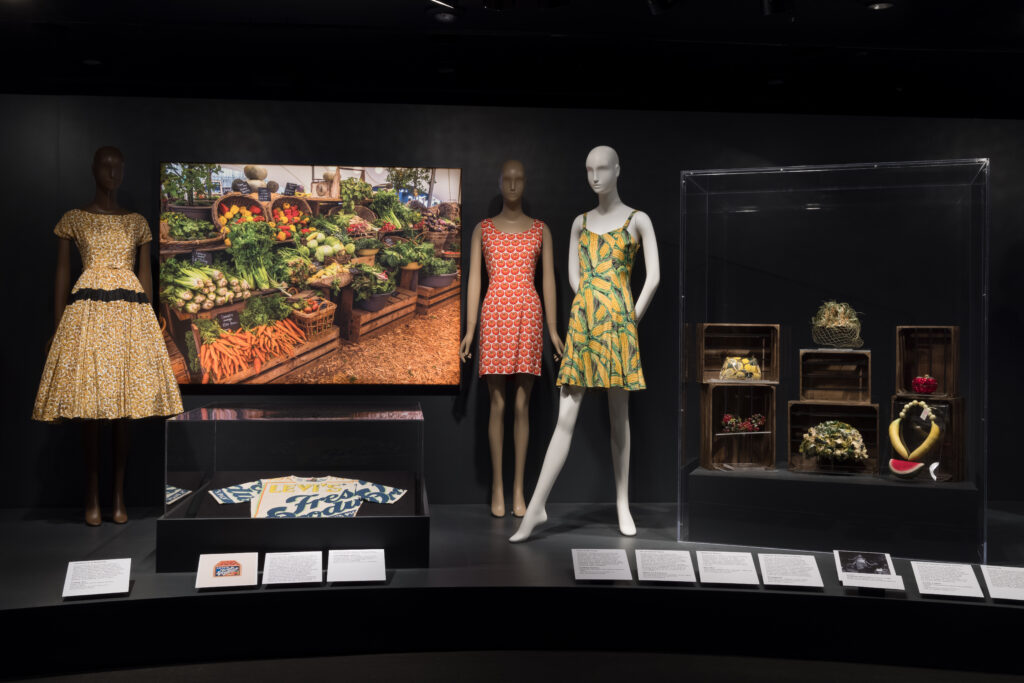
On Saturday, September 30, I had plans to make my way from Brooklyn to Chelsea to view this exhibition. My boyfriend and I stopped for pumpkin spice lattes before getting on the Manhattan bound C train.While we waited for our coffees I got a WhatsApp message from my sister, who was in my hometown of Bogotá, Colombia, asking me if she could call me. I stepped out of the pop-music-bursting coffee shop with my phone to my ear.
My grandmother’s health has been decaying all year, maybe even before then. On a morning in July I had received a similar WhatsApp message and called my sister to find out my grandmother had a bad fall and was taken to the hospital. I’d never been so far away from my family, and whenever tragedy has struck, I’ve felt useful by physically being around them, even if I couldn’t really do anything. But this summer proved to be a test of living my life away from them, and accepting there was nothing I could do, even when I felt like they needed me.
On that September Saturday afternoon, as I paced the sidewalk, the wind blowing against my trench coat, I wasn’t expecting any news about my grandmother. Then I heard the undertone of my sister’s voice, the one that told me she had bad news before she’d had a chance to actually say it. I realized the family group chat had been awfully quiet. My grandmother normally uses the group chat every day, even if she’s trying to communicate with one specific person. She sends things like “Me llamas?” (“Can you call me?”) usually meant for my mom, aunt, or uncle, and I’m never sure if they know who she’s reaching out to or if they all give her a call. In any case, it works. She also loves to send heart-shaped stickers on the WhatsApp group, or little gifs like a cartoon of a girl in bed with sheep hopping joyfully above her, to indicate its time for her to go to sleep.
The news sounded bad. My grandmother had woken up that morning with half of her face drooping. She couldn’t talk or use her phone or swallow. My eyes filled with tears and I asked to talk to my mom. My mom explained that they believed she’d had a stroke. My grandmother, after recovering from the fall earlier in the summer, said no more hospitals. There was nothing they could do but wait. And the wait could be hours, or it could be days, or it could even be months. So there was no reason to fly out. If anything happened they would call me. But for now it was best to stay put in New York.
My boyfriend and I sat on a park bench instead of heading straight for the train. I took a sip from my latte, which I liked because it was like drinking a pastry, and after a few minutes decided that what I needed to do was go to Food & Fashion anyway. Sulking wouldn’t help. I wiped the tears with the back of my hand and said: “So, do you want to go look at some dresses?”
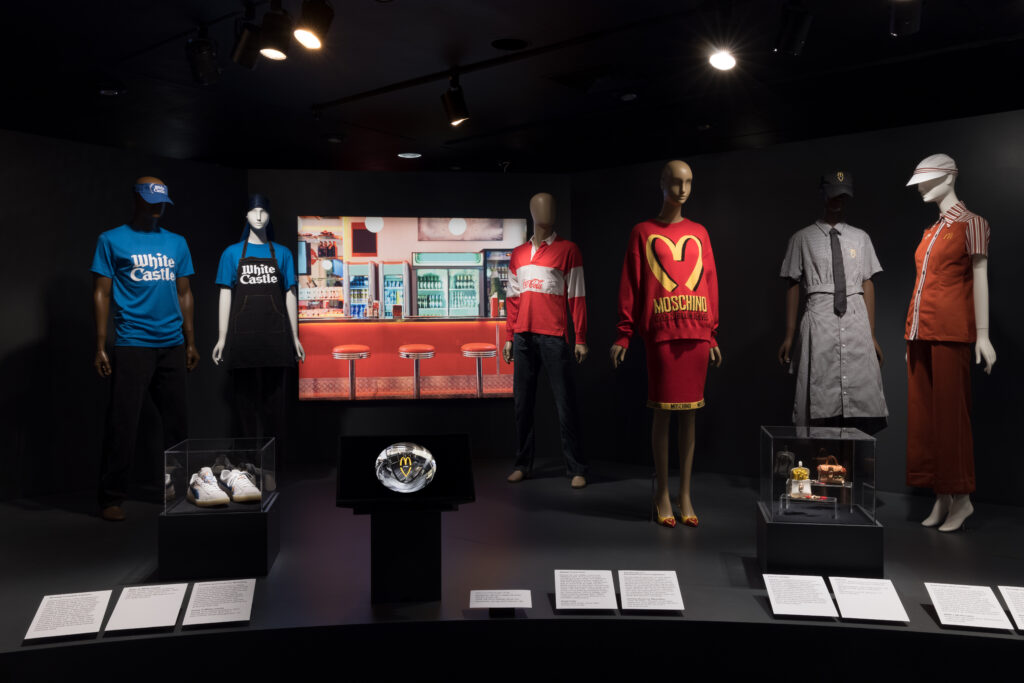
The Museum at FIT holds its temporary exhibitions in the building’s basement. The title Food & Fashion is printed on the wall by the door to the gallery, in chocolate brown cursive on a pink background, resembling icing on cake. A red carpet leads visitors through the door and down a flight of stairs, where more icing lettering greets them before entering the space, this time in funfetti. The space is dark, cool, and quiet, with the items on display spotlit, interrupted only by a few screens playing recordings of runway shows related to the theme (like when Moschino had its McDonald’s-inspired collection). The peace in the room, isolated from the chaos of the city, also calmed the chaos of my mind. Walls of gallery text explained the broad approach the curators took when creating the show, which made it feel well researched and academic, almost clinical. Clean.
I found the exhibit to resemble a pie whose crust was baked playfulness, featuring Jeremy Scott’s Moschino and Junya Watanabe’s Comme des Garçons, two high end brands known for not taking themselves too seriously. The filling was a journey through everything you can think of relating to food and fashion: a key ingredient is cultural identity, featuring designers like Han Feng who printed Chinese tea box labels onto silk; or more problematically, Dolce & Gabbana, who printed pasta on dresses for their 2017 Spring collection on la dolce vita. To add a bit of spice, the exhibition looked at sustainability and farming practices, and how they relate to the production of both clothing and food, featuring Stella McCartney’s work on creating fabrics made out of avocado and apple waste, among others.
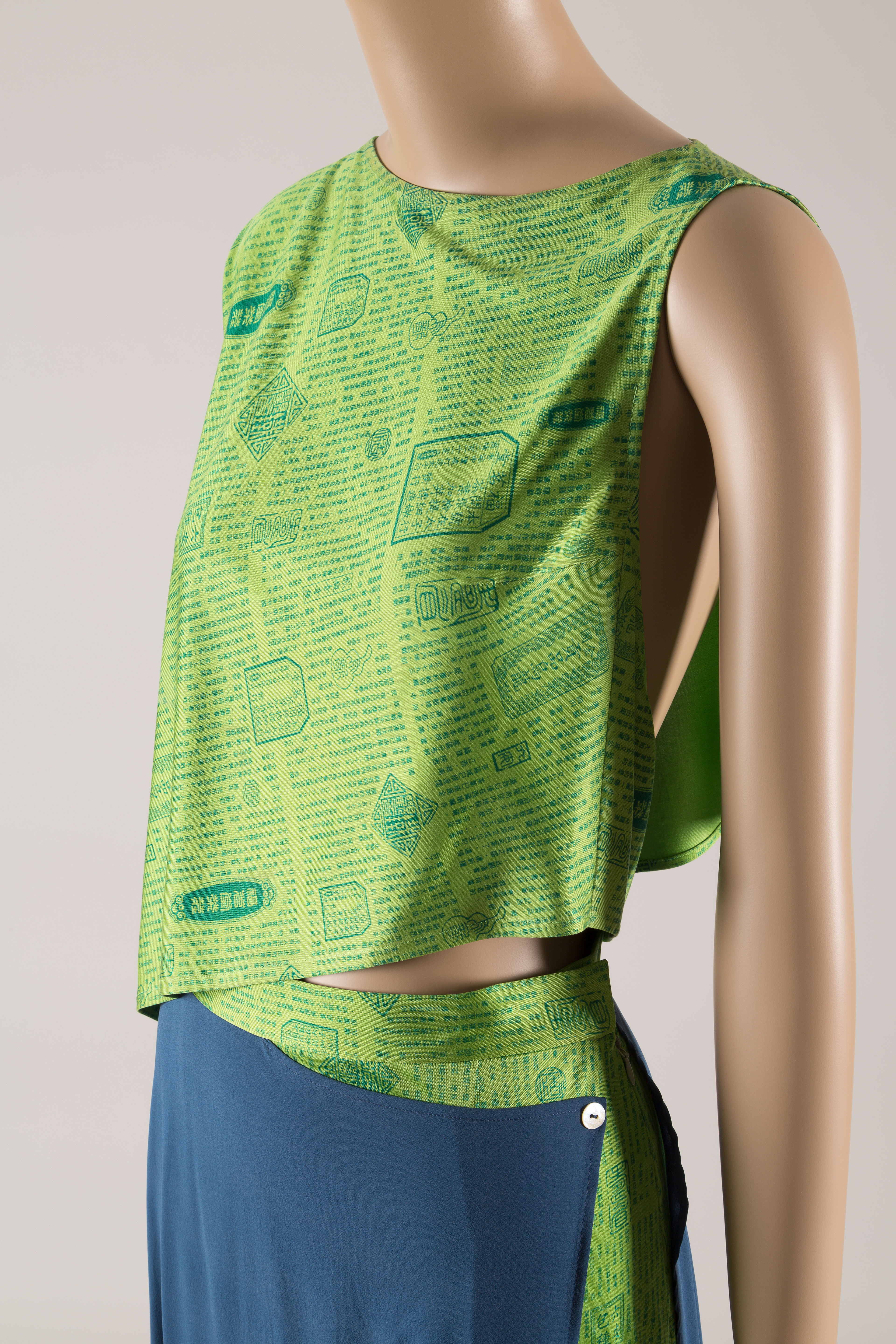
But my personal favorite ingredient of this sweet and sour pie was the relationship between feminine dressing and baked sweet goods. The curatorial text reads:
Magazines of the mid-twentieth century often presented cakes with the same flare as women’s fashion, highlighting their striking visuals and textural qualities. Sewing and baking are domestic activities traditionally considered a woman’s work, and as a result, there is a crossover in the language used to describe textiles and pastries. Terms such as red velvet and silk chiffon derive from the world of fashion and connect baking and clothing to women’s material culture.
Dresses that look like pastries. It’s perfect. It reminds me of my grandmother.
My grandmother took on the role of matriarch long before my grandfather passed away. She met him when she was fifteen and got married at nineteen. She had to get her parents’ official permission because at that time, the legal age to get married in Colombia was twenty-one. She dedicated herself to having and raising children, and then to raising grandchildren. And she baked a lot. She’d make scones for my grandfather’s breakfast which he ate every day with strawberry jam, homemade, and a cup of English breakfast tea. For every birthday she’d bake a special cake, different flavors for different family members, according to tradition and preference. When my sister and I visited our grandparents after school, which happened a few times a week, there were always sweet treats: brownies, cinnamon rolls, chocolate roll cake. Everything made from scratch. My best baking instincts I learned through watching her. Baking is science, but it’s also art, much like fashion. She said love was her “secret ingredient” and to her that’s what baking was: a love language.
My grandmother also fiercely knit clothing for children and grandchildren, even when we became adults. She made my mother a beautiful hooded red wool sweater that makes her look like Little Red Riding Hood, which I steal whenever I visit home and it’s a particularly gloomy day. She made dresses for the babies, booties, scarfs. She repaired socks and buttons, and kept the home together one thread at a time. She wore lots of pastels, especially knit sweaters, and often added a dash of jewelry, pieces gifted to her by my grandfather for the most part. Her rotating collection of shawls was impressive, and she always looked cozy, ready for a hug.
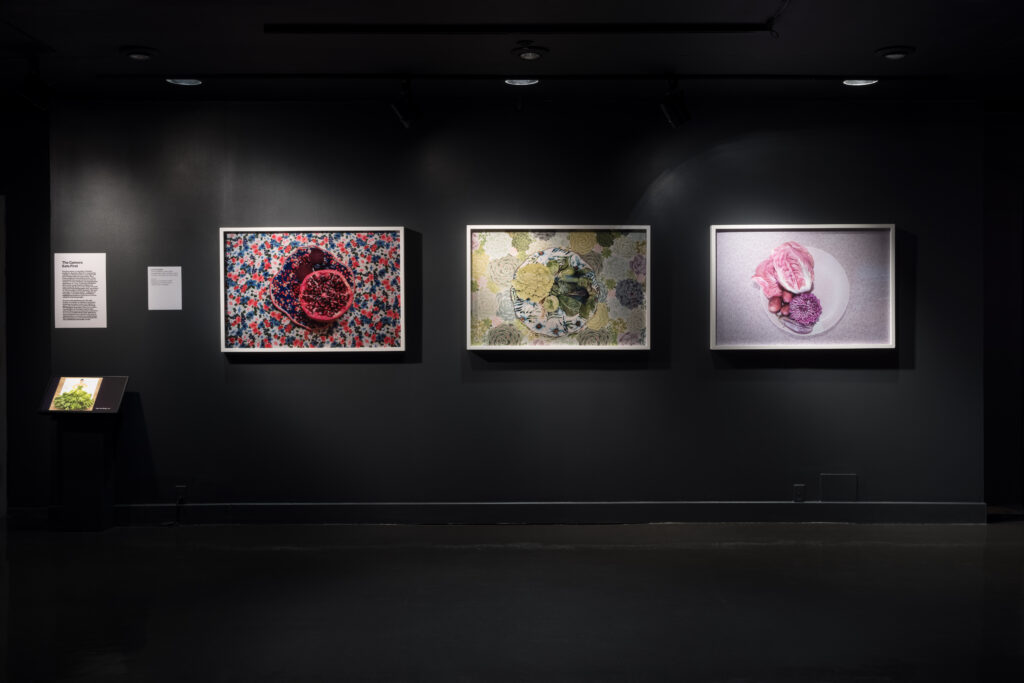
© The Museum at FIT.
Standing in a dark Chelsea basement, I thought of how my grandmother had embodied domesticity and femininity in the most traditional sense for most of her life. While there were many other interpretations of the relationship between food and fashion floating around me under glimmering spotlights, this exploration felt to me the most obvious, and yet I hadn’t considered it until it was right before my eyes. What I appreciated the most about the show is that it’s not all about crazy fun fruit and pasta prints or clothes shaped like food. It connects these two industries on all levels: economical, social, cultural, anthropological. And in this way, it makes it easy to start to see the relationship between the two in unexpected parts of your life.
When my grandfather passed away, my grandmother stopped baking as much. Arthritis has claimed her fingers, so she doesn’t knit much these days. But to my grandmother the kitchen has meant love. Maybe that’s why on Wednesday, October 4, when she was feeling a bit stronger, she made her way there and started making “masitas de plátano,” a kind of plantain pastry she’d make when her children were little. We don’t really know what is going to happen, or exactly what afflicted her that Saturday. But we do have her recipes and the clothes she made us that still fit.
Food & Fashion is on view until November 26, 2023 at the Museum at FIT. In conversation with the exhibition, there will be a Food & Fashion Symposium on November 3, 2023 at the Fred P. Pomerantz Art and Design Center.
Laura Rocha-Rueda is a Colombian writer living in Brooklyn. Her work on the intersections between fashion, pop culture, and literature has appeared in Vestoj and HALOSCOPE. She has an MFA from The New School.

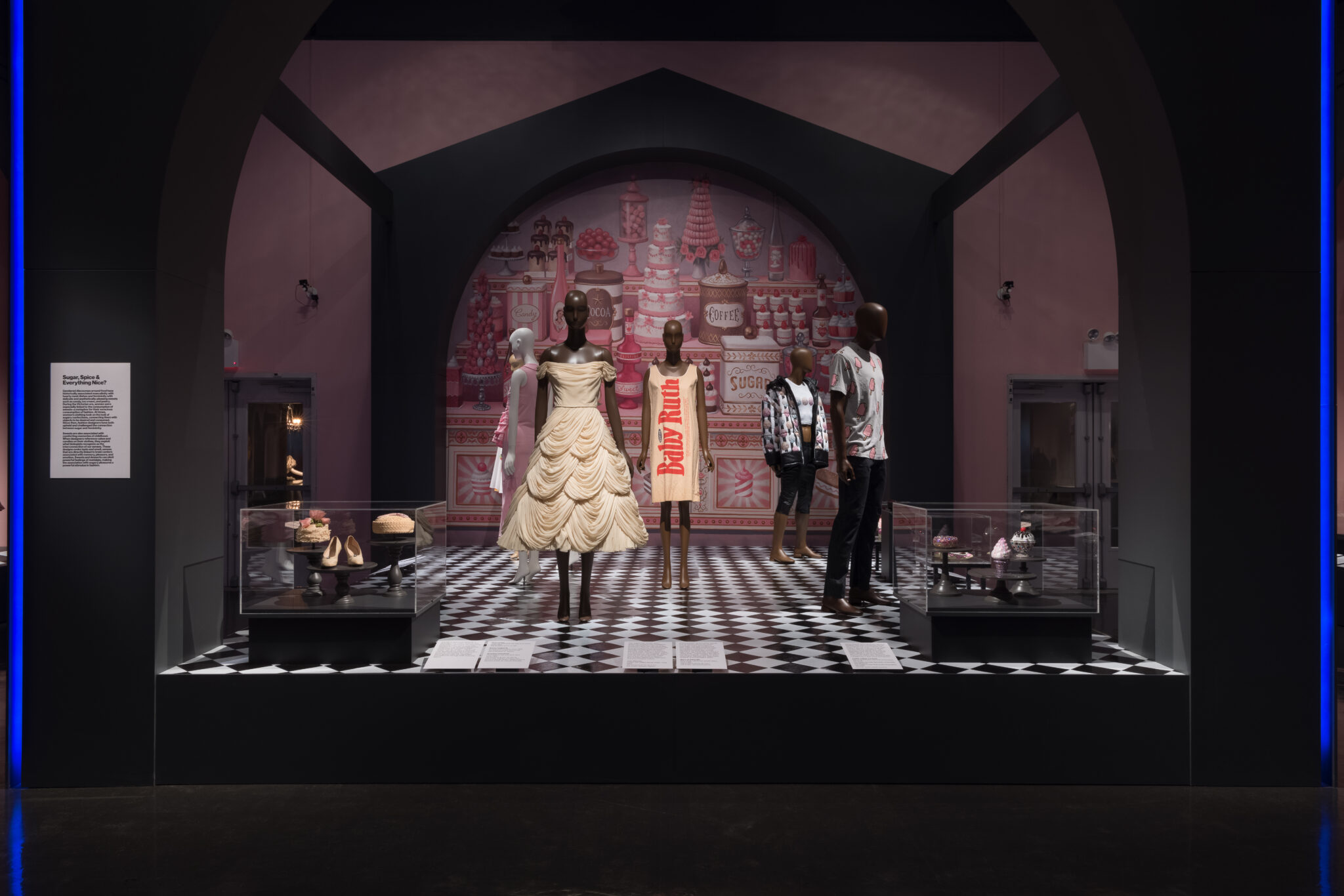
Comments are closed.